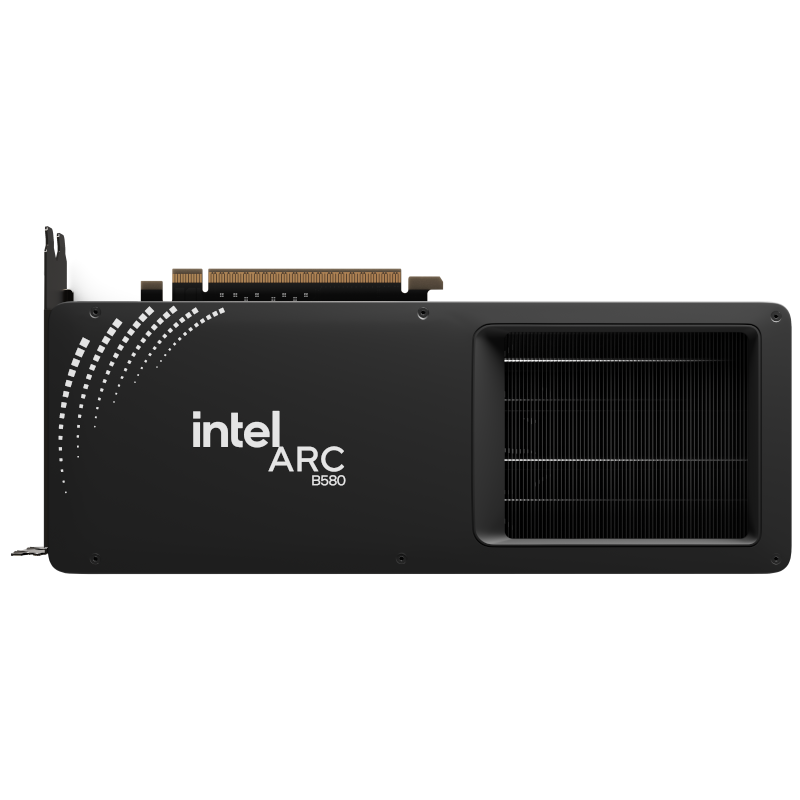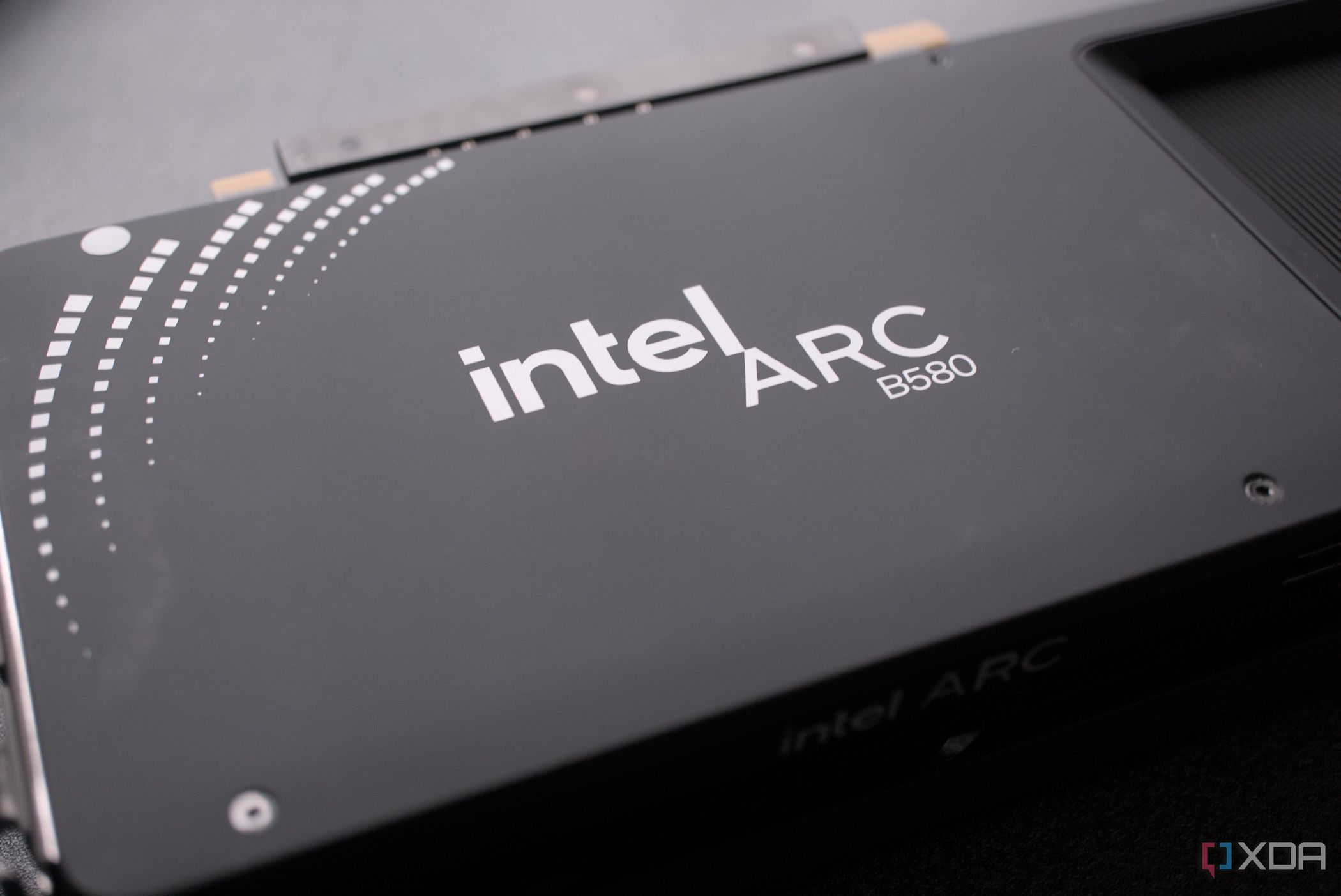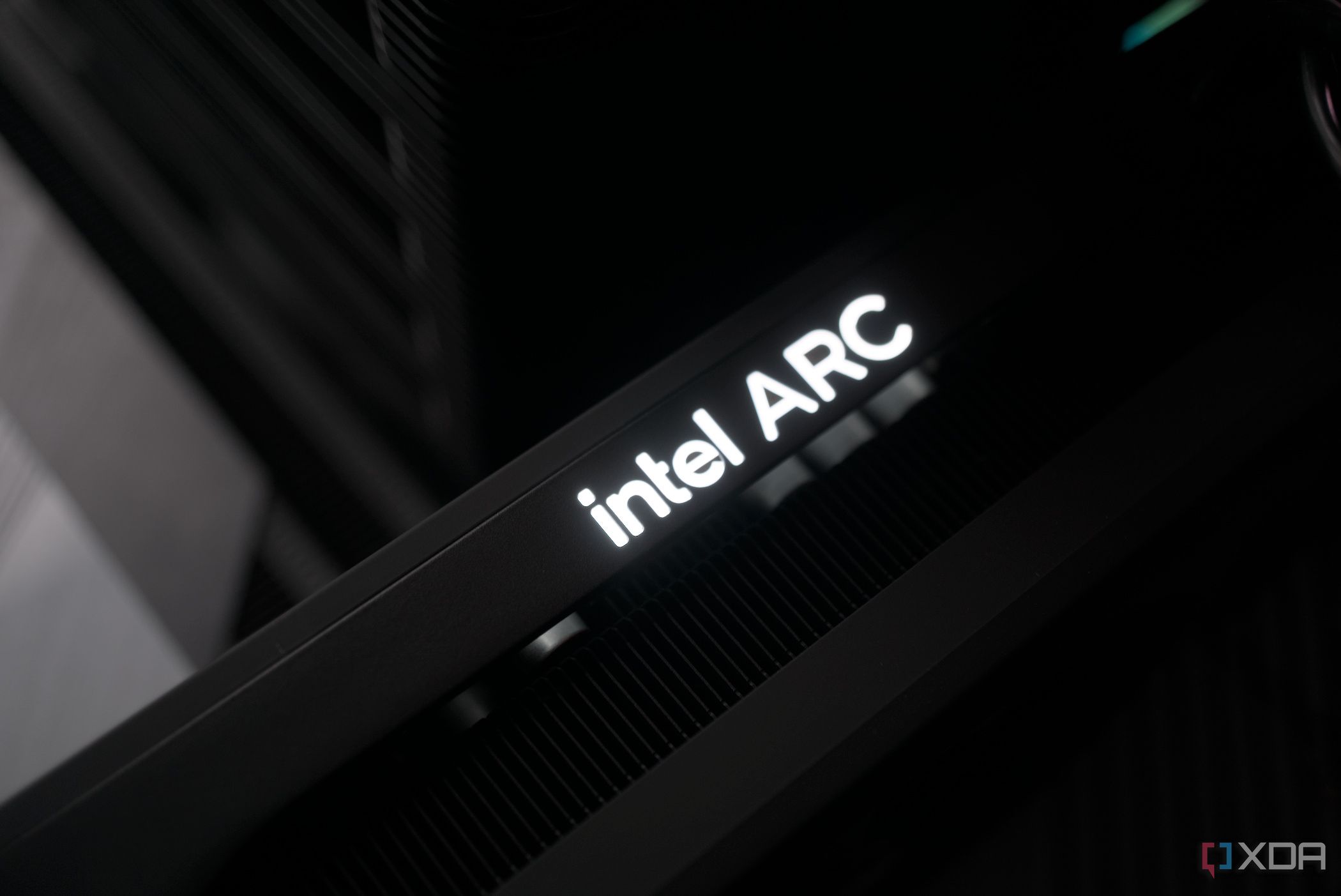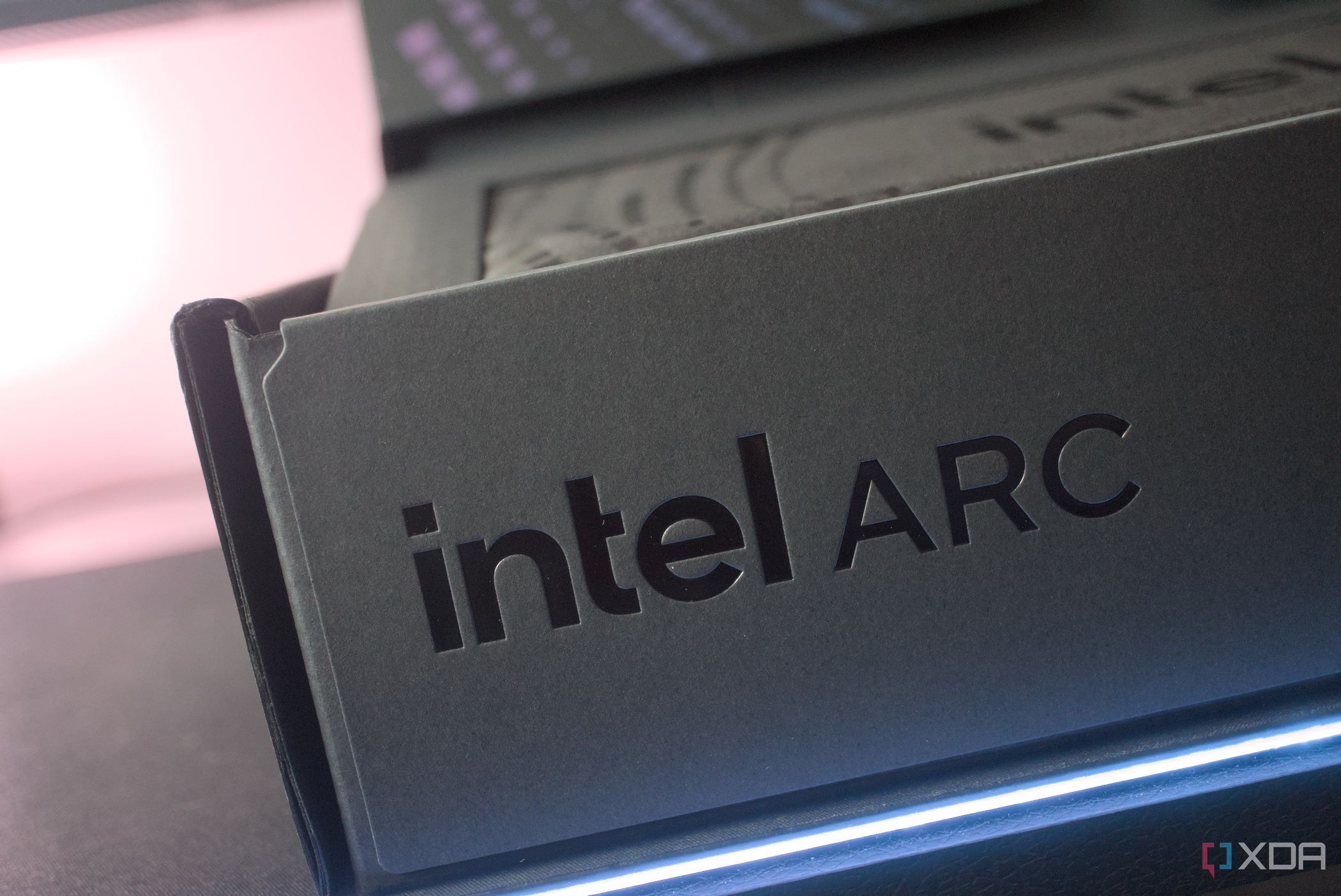It seemed destined that Intel would launch its Arc B770 this at Computex. The company hasn't announced this card, or even said that it's working on a B770. But with the runaway success of the Arc B580 late last year, a growing list of leaks confirming the existence of the card, and an eager social media manager playing fast and loose with the company's Computex announcements, the stars were aligning for the Arc B770 to take the PC gaming market by storm.
We don't have the Arc B770, however. Instead, Intel revealed the Arc B50 Pro and Arc B60 Pro, both of which are GPUs targeted at workstation users, with a particular focus on AI. And as a PC gamer, that's frustrating. There hasn't been a better time to release a higher-end Battlemage GPU. The Arc B580 and B570 are fantastic, no doubt, but they can't scale up to match the recent offerings from Nvidia and AMD, and more importantly, you can't buy them for list price. Meanwhile, Intel is pushing out new professional graphics cards that use the same silicon, though repurposed for a far different market.
Intel's new Arc Pro GPUs are truly special
Don't misunderstand me
I don't want anyone to misconstrue my frustration as Intel doing something objectively bad. That isn't the case at all. In fact, the Arc B60 Pro, in particular, is one of the most exciting AI announcements we've seen since the bandwagon set forth a few years ago. It's one of the few products that I'd truly classify as disruptive, creating a highly scalable AI platform through Project Battlematrix that massively lowers the barrier to entry for AI inference. Nvidia dominates that market so much that you could classify it as a monopoly. Stiff competition from Intel, targeting those users who don't have the enterprise dollars to throw Team Green's way, is a great thing.
I was a stalwart advocate for including Project Battlematrix on our list of the best Computex 2025 announcements, in fact. It's something we haven't seen from AMD or Nvidia yet. Instead of racks with the most powerful AI GPUs money can buy — and tens of thousands of dollars to go along with it — Project Battlemage provides a multi-GPU platform for aspiring AI developers and researchers. It's a true entry point into the growing world of AI workstations; a market that AMD and Nvidia have ignored as they go after the biggest clients with the biggest pocketbooks.
I'm sure I'm not the only one who's frustrated that we haven't seen the Arc B770 yet, but it's important to recognize that there's a group of aspiring AI developers for which Project Battlemage was an earth-shattering announcement. Intel is disrupting a market that's only growing, and that's exactly what it should be doing. But as someone who's on the lookout for great value GPUs in a time when those options are few and far between, Intel is also the only company really delivering the goods.
Same silicon, different purpose
Split the difference
The Arc B60 Pro and Arc B580 use the same GPU, in particular, BMG-G21. This is the die Intel uses for both the Arc B580 and B570, and it'll reuse the die for the B50 Pro and B60 Pro, as well. Reusing dies isn't anything new in the world of GPUs. The RX 9070 XT and RX 9070 use the same die; the RTX 4070 Ti Super and RX 4080 are built on the same GPU. It even happens in the world of CPUs. The Ryzen 7 5800X3D and Ryzen 7 5700X3D use the exact same silicon, but the latter just rounds up all the silicon that couldn't reach the mark to be sold as a Ryzen 7 5800X3D.
My issue is that there are so few Battlemage GPUs right now, and in a time when we desperately need them. You can find the Arc B580 in stock at retailers, but the cheapest model I was able to find was $320 — $70 over the list price of the card. Most models are selling for closer to $350, and Intel's shiny Founder's Edition version will run you a clean $400. The secondhand market is a bit more forgiving, but you'll still spend over $300 on a card. Meanwhile, GPUs like Nvidia's recent RTX 5060 have shown how dire the situation is with 8GB graphics cards, but it's tough to recommend the 12GB Arc B580 when it's more expensive than Nvidia's latest GPU.

Shader Units 2,560
Ray Accelerators/Cores 20
AI Accelerators/Cores 160
Base Clock Speed 2670 MHz
The Intel Arc B580 is one of the launch GPUs for Intel's second-gen graphics card family. Rocking a new architecture, generational performance improvements, and the same budget-friendly price, this is the GPU to buy for affordable 1440p gaming.
Intel is repurposing its silicon. The BMG-G21 die could be used in the 12GB Arc B580 for $250 or the 10GB Arc B570 for $220, or Intel could spend a little extra money for memory and repackage the silicon for the $300 Arc B50 Pro. There isn't a list price for the Arc B60 Pro — it's only available through system builders — but I have to imagine Intel is making a healthier margin on the Arc B60 Pro than it's making on the Arc B580. That's just a guess on my part, but it's certainly not unheard of in GPU land for companies to repurpose consumer silicon for enterprise applications and make a healthy profit. The RTX 5090 uses the same GPU as the RTX Pro 5000 Blackwell — GB202. At list price, the professional card is more than twice as expensive despite only claiming a small bump in memory capacity.
My frustration isn't that Intel is repurposing silicon. It's that it's repurposing silicon when consumer Battlemage options are few and far between, and impossible to find at MSRP. Nvidia has shared silicon across consumer and workstation segments for years, but it also has a robust product stack in both segments and the allocation to support those two product lines. I'm not sure what Intel's allocation looks like, frankly, but it's hard not looking onto the B60 Pro with envy when you can't even find an Arc B580 for list price.

Related
Intel's Arc B580 is great for budget gamers, except for one major flaw
Budget GPUs seemingly have a champion in the Arc B580, if only it didn't tank with budget CPUs.
The bottom rung of performance
Great value, but not for everyone
Intel won't change course and stop making professional GPUs, and it shouldn't. That's bad business, and as much as I want to see more consumer Battlemage GPUs on the shelves, I'm still not forgetting about how big of a deal Project Battlematrix really is. Where I would like to see Intel take action is the Arc B770. It's been the GPU implied by Intel since the moment we first learned about its Battlemage offerings. After all, we had an Arc A770 in the previous generation. The only natural question is when we'll see the Arc B770. And yet, six months on from when we saw the first Battlemage GPUs hit shelves, we've heard nothing about any additional Battlemage GPUs, at least from Intel officially.
That's despite a series of leaks over the past several months, rumors of cancellation, and then more rumors of un-cancelling the cancellation. It's exhausting. None of this is Intel's fault, of course. It's the fault of people like me and you, who dig into all the minutia to find any shred of credible information about exciting tech products. But with this mountain of tangential information shooting out from all sources about the Arc B770, you'd think we'd have heard something by now.
I hope we do soon because the Arc B770 represents something very important for Intel and the GPU market as a whole. Intel has existed to undercut AMD and Nvidia, serving up GPUs like the Arc B580 that can't go toe-to-toe with the latest generations from the big dogs in the discrete GPU business, but come in at a lower price and provide excellent value. The Arc B770 is when Intel starts stepping on the toes of AMD and Nvidia. Given what we've seen out of cards like the RTX 5060 Ti and the performance expectations for the RX 9060 XT, it could represent a shift in what we've known about Intel's GPUs up to this point.
I'm speculating here, of course — we don't know anything officially about the Arc B770 — but with how close the Arc B580 already is to the RTX 5060, the Arc B770 is almost certainly a card that would compete with current-gen offerings from AMD and Nvidia. That's the shift that PC gamers have been begging for. It's great that we've seen great value out of Intel's Arc GPUs, but no one is under the illusion that Intel can undercut forever. Eventually, it'll need to be able to compete with the current generation from AMD and Nvidia, and the Arc B770 is when we should (hopefully) see that start to happen.
.png)













 English (US) ·
English (US) ·